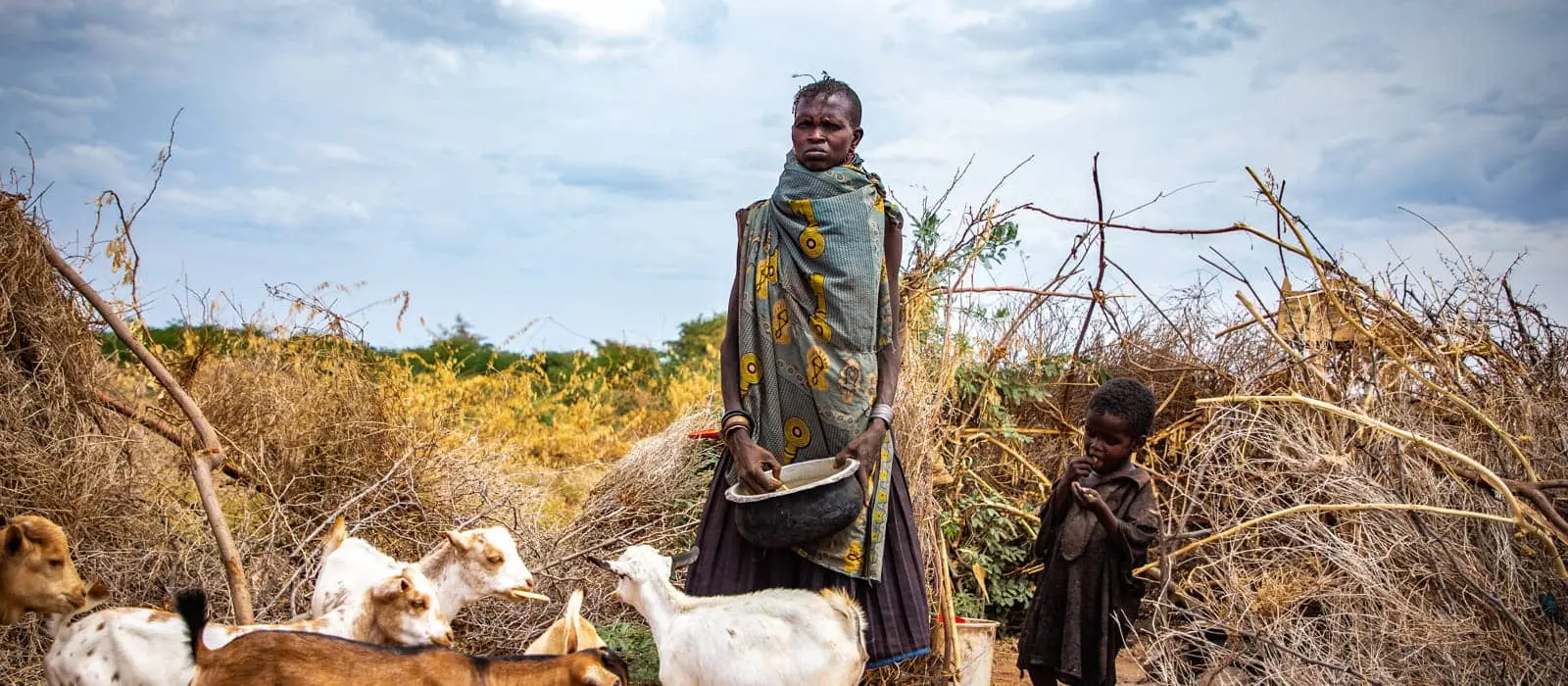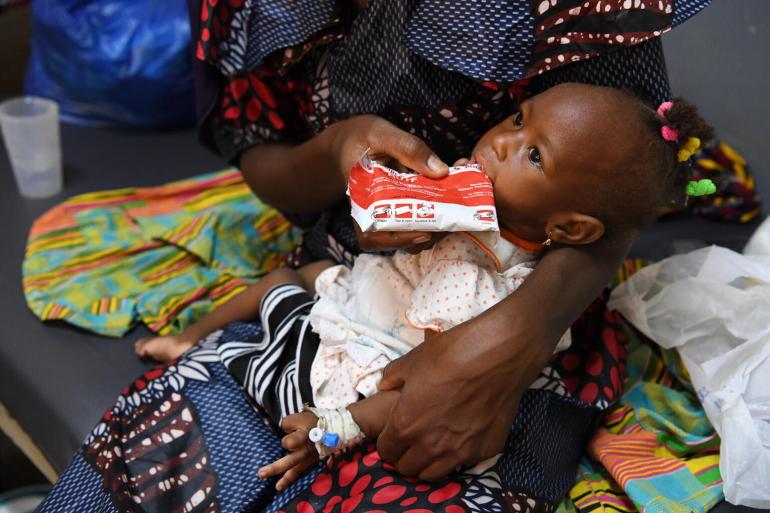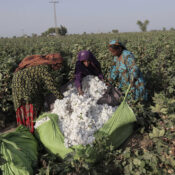
Climate Change & Food Insecurity: Impact on Malnutrition and Child Growth
Introduction:
Climate change is one of the most pressing challenges of our time. Its consequences ripple through various aspects of human life, with its impact on food security being a significant concern. Climate change affects food production, disrupts food supply chains, and ultimately leads to food insecurity. One of the most alarming consequences of food insecurity is the prevalence of malnutrition and its adverse effects, especially on children. This essay delves into the intricate relationship between climate change, food insecurity, malnutrition, and stunted child growth, highlighting the urgency of addressing this multifaceted issue.
I. Climate Change and Food Production
To understand the link between climate change and food insecurity, it’s essential to examine how climate change influences food production. Climate change manifests through various mechanisms, such as rising temperatures, changing precipitation patterns, and increased occurrences of extreme weather events.
1.1 Rising Temperatures
One of the most noticeable effects of climate change is the steady increase in global temperatures. This rise in temperature can have significant consequences for agriculture. Warmer temperatures can lead to the expansion of pests and diseases that affect crops. Furthermore, some staple crops like wheat and rice have optimal temperature ranges for growth, and deviations from these ranges can result in reduced yields.

1.2 Altered Precipitation Patterns
Climate change also disrupts precipitation patterns, leading to either more intense rainfall or prolonged droughts in certain regions. Excessive rainfall can result in flooding and waterlogging, damaging crops and rendering land unsuitable for farming. Conversely, prolonged droughts can lead to water scarcity, making it challenging to irrigate crops effectively. Both scenarios have a direct impact on food production.
1.3 Extreme Weather Events
The increasing frequency and intensity of extreme weather events, such as hurricanes, typhoons, and cyclones, have a devastating effect on agriculture. These events can destroy crops, disrupt supply chains, and displace communities, leading to a loss of livelihoods and access to food.
II. Food Insecurity and Its Dimensions
Food insecurity is a broad concept encompassing various aspects, including availability, access, utilization, and stability of food. These dimensions highlight the complexity of the issue.
2.1 Availability of Food
Availability of food refers to the physical presence of sufficient quantities of food at the national, regional, or household level. Climate change can disrupt this aspect as it affects the production and supply of food. Crop failures, livestock losses, and damaged infrastructure all contribute to reduced food availability.

2.2 Access to Food
Access to food is influenced by economic and physical factors. Climate change can exacerbate this aspect of food insecurity by increasing the cost of food due to production losses and transportation disruptions. Vulnerable communities, often disproportionately affected by climate change, may find it increasingly difficult to afford nutritious food.
2.3 Utilization of Food
Utilization of food relates to the nutritional value and quality of the available food. Climate change can impact food utilization through several channels. Reduced crop yields and changing environmental conditions can affect the nutritional content of crops, potentially leading to deficiencies in essential nutrients.
2.4 Stability of Food
Food security also depends on the stability of food access over time. Climate change-induced extreme weather events, such as droughts and floods, can disrupt food supply chains, leading to price fluctuations and food shortages. This instability poses a direct threat to food security.
III. Malnutrition and Climate Change
Malnutrition is a severe consequence of food insecurity, and its prevalence is intimately linked with climate change-induced food production disruptions.
3.1 Types of Malnutrition
Malnutrition encompasses various forms, including undernutrition, overnutrition, and micronutrient deficiencies. Undernutrition is particularly pertinent when discussing climate change’s impact on food insecurity. It includes conditions like wasting, stunting, and underweight, with children being the most vulnerable group.
3.2 Childhood Malnutrition
Children are especially susceptible to malnutrition. Stunting, which refers to a child’s impaired growth due to chronic undernutrition, is a prevalent issue in many parts of the world. Climate change-induced food shortages and reduced nutrient quality can exacerbate this problem.

IV. Stunted Child Growth: A Long-term Consequence
Stunted child growth, resulting from malnutrition exacerbated by climate change, is not only a short-term health concern but also a long-term developmental issue.
4.1 Health Impacts
Stunted growth during childhood can have severe health implications. Children who experience stunting are more susceptible to infections, have compromised cognitive development, and are at an increased risk of non-communicable diseases in adulthood.
4.2 Economic Consequences
Stunted children face diminished economic prospects in adulthood. As a result of impaired cognitive development and health issues, they are less likely to achieve their full potential, impacting their productivity and earnings.

V. Mitigation and Adaptation Strategies
Addressing the complex issue of climate change, food insecurity, malnutrition, and stunted child growth requires a combination of mitigation and adaptation strategies.
5.1 Mitigation
Mitigation efforts aim to reduce the greenhouse gas emissions responsible for climate change. This includes transitioning to renewable energy sources, implementing sustainable agricultural practices, and reducing food waste. By mitigating climate change, we can prevent some of its worst consequences on food security.
5.2 Adaptation
Adaptation strategies are equally crucial. They involve measures to cope with the ongoing impacts of climate change. Examples include developing drought-resistant crop varieties, improving water management, and building resilient food supply chains. These strategies help communities adapt to the changing climate and minimize food insecurity.
VI. Conclusion
Climate change’s impact on food production is a multifaceted challenge that extends to food insecurity, malnutrition, and stunted child growth. The consequences of this complex issue are far-reaching, affecting the health, well-being, and economic prospects of individuals and communities worldwide. To combat this challenge, a combination of mitigation and adaptation strategies is essential. We must address the root causes of climate change while simultaneously adapting our food systems to the realities of a changing climate. Only through these concerted efforts can we hope to ensure a more secure and sustainable food future for all.
All Categories
- Agricultural Methods
- Agriculture and Women Small Farmers Rights Awareness
- Climate Change
- Disable and Human Rights
- Disable Jobs
- Donation
- Education
- Health Issues
- Organic Foods
- Organic Vegetables
- Orphans Children
- Plastic production and disposal
- Services
- Sinking in Scarcity
- Success Stories
- Uncategorized
- Waste Management
- Women Rights
- Youth Empowerment




